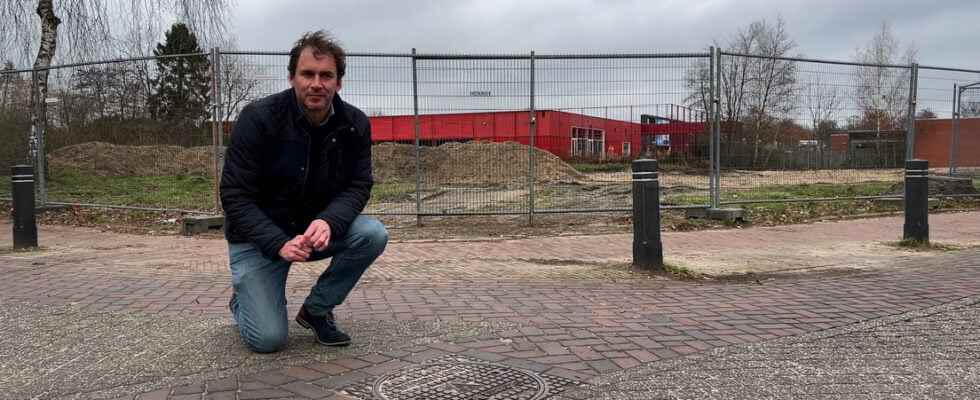LEUSDEN/BILTHOVEN – Leusden will investigate how heat from the sewage and surface water can play a role in the local energy transition. The municipality also wants to see whether wastewater can be cleaned in a sustainable way. “Leusden would like to be energy neutral as quickly as possible, in 2040 if possible,” says alderman Fenneke van der Vegte (Groenlinks-PvdA).
Until a few years ago, the sewer was nothing more than a network of pipes through which waste water ran, but now the realization is growing that it can also serve as an energy source. “It is a fairly new technique. There are now about fourteen systems in use in the Netherlands,” says Barry Meddeler of consultancy and engineering firm Tauw, which has been involved in riothermy – as the technology is called – for years.
‘Sewer could heat 15 percent of the Netherlands’
It works as follows: when you use the toilet, shower, dishwasher or washing machine, (warm) water flows through the drain into the sewer. Together with other wastewater from companies and the temperature under the ground, the sewer is on average about 12 to 20 degrees. By installing heat exchangers in the sewer, part of the heat can be recovered from the sewer, for example to heat your house together with a heat pump.
The first system was put into use in 2013, but the technology has only gained popularity in recent years. “We all want to get rid of the gas and the high gas prices are now also helping,” said Meddeler. According to him, it would theoretically be possible to meet 15 percent of the total Dutch heat demand with riotherm. And because the sewer is already there, it would be easy to convert it into a heat source.
Swimming Pool Brandenburg
But that does cost money. “The initial investment is high, but the system is a lot more efficient,” says Meddeler. That’s how it works: a traditional central heating boiler has an efficiency of 97 percent. This means that it produces slightly less heat than energy enters the boiler. With a heat pump, the efficiency is 350 percent and with a rio-thermal system 450 percent. “If you look at the payback time compared to an investment in an ordinary air source heat pump, it is about twelve to fourteen years.”
The Bilthoven Brandenburg bath is one of the few Dutch places where the system has already been applied. For 2.5 years, bathers have been swimming around in bath water heated by riothermal heat. The sewer under the nearby Oude Brandenburgerweg had to be overhauled, but now, together with a heat pump and solar panels on the roof of the swimming pool, it ensures that you can float in water of 27 to 31 degrees. “In this way, the entire building is free of gas,” says Niels Smit, technical service employee of the swimming pool.
Enough heat for 1800 Leusden homes
And Leusden sees that too. It has now been more than two years since the municipal council unanimously adopted a motion to investigate new sustainable techniques for sewerage, but only a few weeks ago did not catch up on the subject. “It is a technique that is underground. You see little of it, you hardly notice it and it takes up little space. That makes it very attractive,” says Van der Vegte.
And that is why the municipality of Leusden also asked to map out the opportunities. Tauw’s research shows, among other things, that the existing construction around the Middenweg in the north of Leusden has great potential to be connected to such a sewerage system. According to the experts, the sewer there would generate 31,000 gigajoules per year, enough to heat 1800 homes for a year.
New sanitation
The potential is greatest for new-build homes, because, according to Tauw’s calculations, they are at least twice as economical as existing homes. That is why the municipality is going to investigate whether the maximum sixteen yet to be built zero-on-the-meter homes on the old site of the De Klimrakker school building on the east side of the Middenweg can be partly heated via the sewer.
A feasibility study must show whether and how riothermal energy can be applied, as well as the possible use of new sanitation technology. By using vacuum toilets instead of traditional toilets, water can be saved and faeces and urine are separated directly at the source. This could then be burned as biomass at a central point in the area, so that the energy released can be used again by the residents.
With only riothermy you are not there
If all of this works out positively, the municipality will see whether the new technologies can be rolled out across the rest of the municipality. The consultancy mainly sees opportunities in the new residential area in Leusden-South, where about seven hundred homes could be built after 2026.
Tauw also sees opportunities in the use of energy from surface water. For example, the nearby Heiligenbergerbeek would have energy for no fewer than six thousand homes; more than enough for the seven hundred who have to come to Leusden-South. In this way, the Valleikanaal could meet part of the energy demand in the north of Leusden.
For the time being, that is still something of the future, but you are not there with riothermy alone. “It is always a combination of different techniques that you have to use,” says the Leusden alderman. “I’d love to say we’re going to do it for sure, but we just don’t know yet. We really need to explore it step by step.”
Do you have a tip or comment? Send us your news or photo via whatsapp or email.
